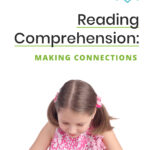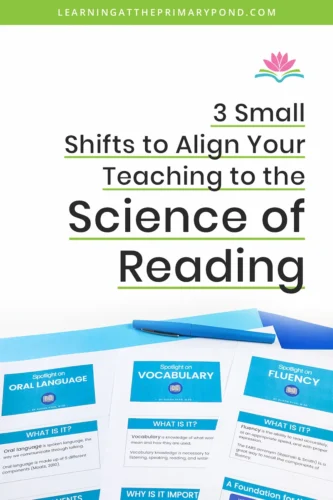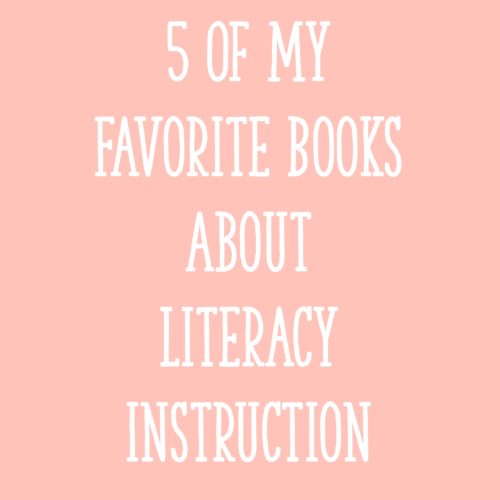We all want our students to use higher-level thinking skills in their reading and writing! Many kids can innately think critically – by wondering about the world, asking (a million!) questions, and exploring their surroundings. How, then, do we harness this type of thinking so that they can apply it to reading and writing? What literacy activities can we use starting in Kindergarten, first grade, and second grade to help build the foundation for higher-level thinking?
Higher-level thinking, often associated with critical and creative thinking, is a set of skills that greatly enhance students’ learning experiences and prepare them for success in the future. In this blog post, I’ll go through some ways you can engage your early learners in higher-level thinking.
One other note before we dive in: I once worked in a district that pushed higher-level thinking at the cost of helping students master the basics (like retelling a story or writing a sentence correctly). While this post focuses on higher-level thinking skills, keep in mind that the “basics” also need attention! Retelling a story, for example, can absolutely be a challenging task for a primary student. So it’s important to teach both types of skills. At the same time, please know that it’s okay (and a good thing) for kids to be exposed to some more challenging questions even as they are still developing the lower-level foundational skills. All of that said, let’s dig in!
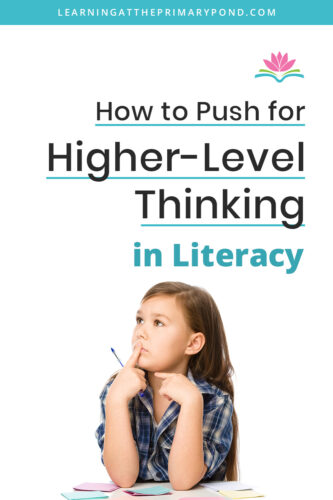
What is Higher-Level Thinking?
Higher-level thinking goes beyond basic memorization and recall. It involves engaging with information, analyzing it, making connections, and using creativity to solve problems. This type of thinking encourages students to question, evaluate, and synthesize information. Here are some components of higher-level thinking:
- Critical Thinking: This involves the ability to think logically, make reasoned judgments, and consider different perspectives. It encourages students to ask probing questions.
- Creative Thinking: Creative thinking allows students to come up with innovative ideas and solutions. It encourages them to think “outside the box.”
- Problem-Solving: Problem-solving is the skill set of identifying challenges and finding possible solutions. It encourages perseverance in the face of obstacles.
- Analytical Thinking: Analytical thinking involves breaking down complex information into smaller parts and understanding the relationships between them.
- Synthetic Thinking: Synthetic thinking is the ability to combine different ideas, concepts, or pieces of information to create new ideas.
Why is Higher-Level Thinking Important for K-2 Students?
At first glance, it may seem that these concepts are too “advanced” for Kindergarten, first grade, or second grade students. However, not only is this type of thinking doable for young students, it’s imperative! Here are a few reasons why higher-level thinking is important:
- Real-World Relevance: Higher-level thinking skills are not just useful in school; they’re essential for success in the real world.
- Deeper Learning: Higher-level thinking encourages a deeper understanding of concepts. Instead of simply memorizing facts, students learn things on a deeper level, which will help them retain information in the long run.
- Confidence Building: As students engage in critical and creative thinking, they develop self-confidence in their own abilities to tackle challenges. This confidence extends beyond academics and positively impacts their overall self-esteem!
- Preparation for the Future: The world is rapidly evolving! The ability to adapt and think critically will be crucial for students’ success in the future.
- Stronger Communication Skills: Higher-level thinking nurtures the ability to communicate with peers.
Literacy Activities for Higher-Level Thinking
Encourage Questions: Create a classroom environment where asking questions is celebrated! A great time for this is during your read-aloud. You can model questioning, and also seek out other students to answer one another’s questions. Then, when students are reading independently, they’ll put this into practice! Below is an example of a strategy from my Reading Workshop Toolkit that you can practice with students.

Open-Ended Projects: Assign projects that require students to solve problems or explore topics from multiple angles. This allows them to exercise their analytical and creative thinking skills. One way you could do this is through a picture or word sort. Do not provide the headings for students – instead, have it be open-ended and see what they come up with! For instance, if you give students the words cap, map, nap, lap, mop, hop, pop, top, hen, pen, ten, men – maybe some students would sort into the three rhyming sounds of -ap, -op, and -en. But others might find common beginning sounds (i.e. “map, mop, and men” all begin with /m/) or ending sounds (i.e. words that end with the /p/ sound and words that don’t end with the /p/ sound.)
Group Discussions: Engage students in discussions that challenge them to defend their ideas and collaborate with classmates. Incorporating “book clubs” where students get together and discuss a book they’ve read lends itself nicely to this! In this resource from Reading Response Center Activities, students come up with a question to pose once they are in Book Club.

Brainstorming Sessions: Introduce brainstorming sessions where students come up with many ideas, and without judgment! When students are getting ready to write stories, it’s helpful to have them brainstorm many different potential topics. Here’s an example from the 1st Grade Writing Workshop where students brainstorm ideas for poetry ahead of time.
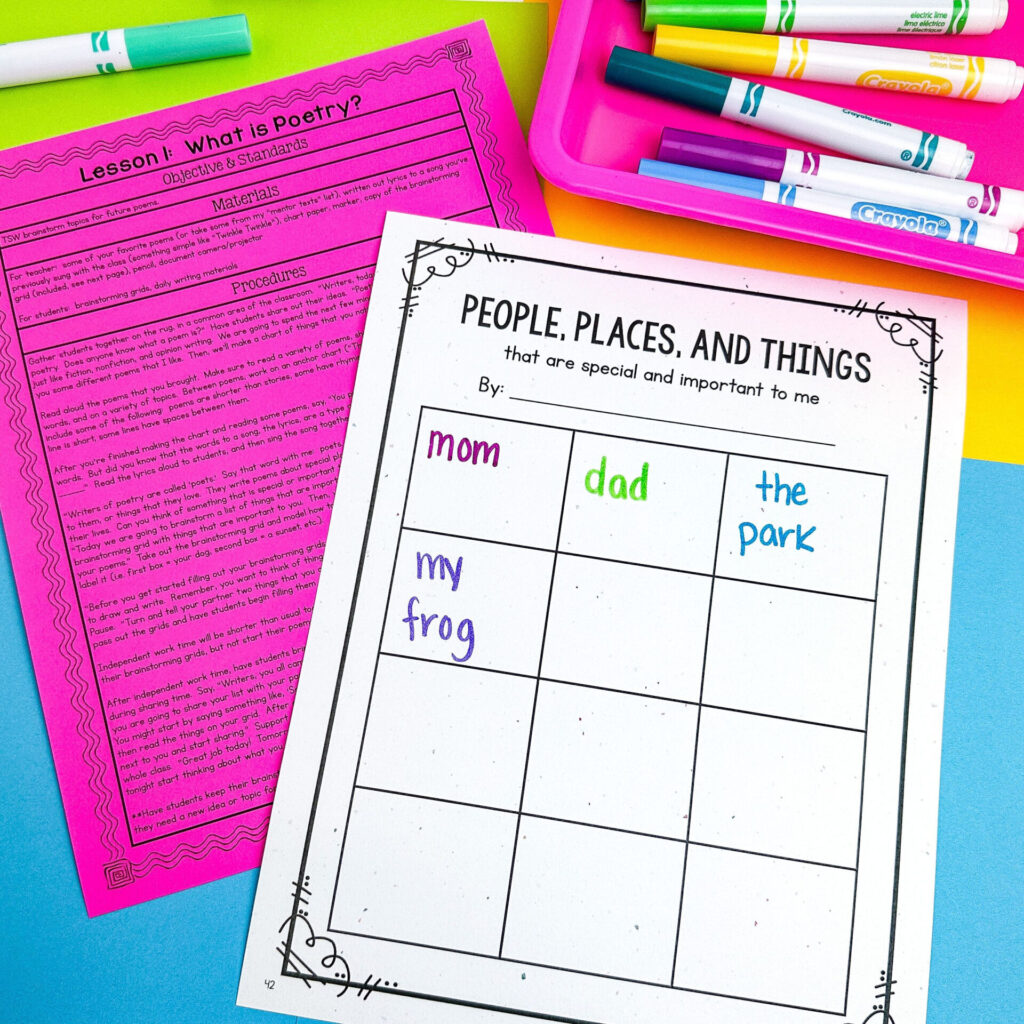
Storytelling: Anytime you can have students creatively tell a story absolutely counts as pushing for higher-level thinking! Students can do this orally or through writing. They could tell a story about their own day by sequencing events, or work on a narrative piece during writing time.
Dramatic Play: Allowing students to participate in role-playing activities encourages them to think from different perspectives and consider various outcomes. Below is a “Pet Store Dramatic Play” example from the Kindergarten Literacy Club materials, where we often include Dramatic Play resources.
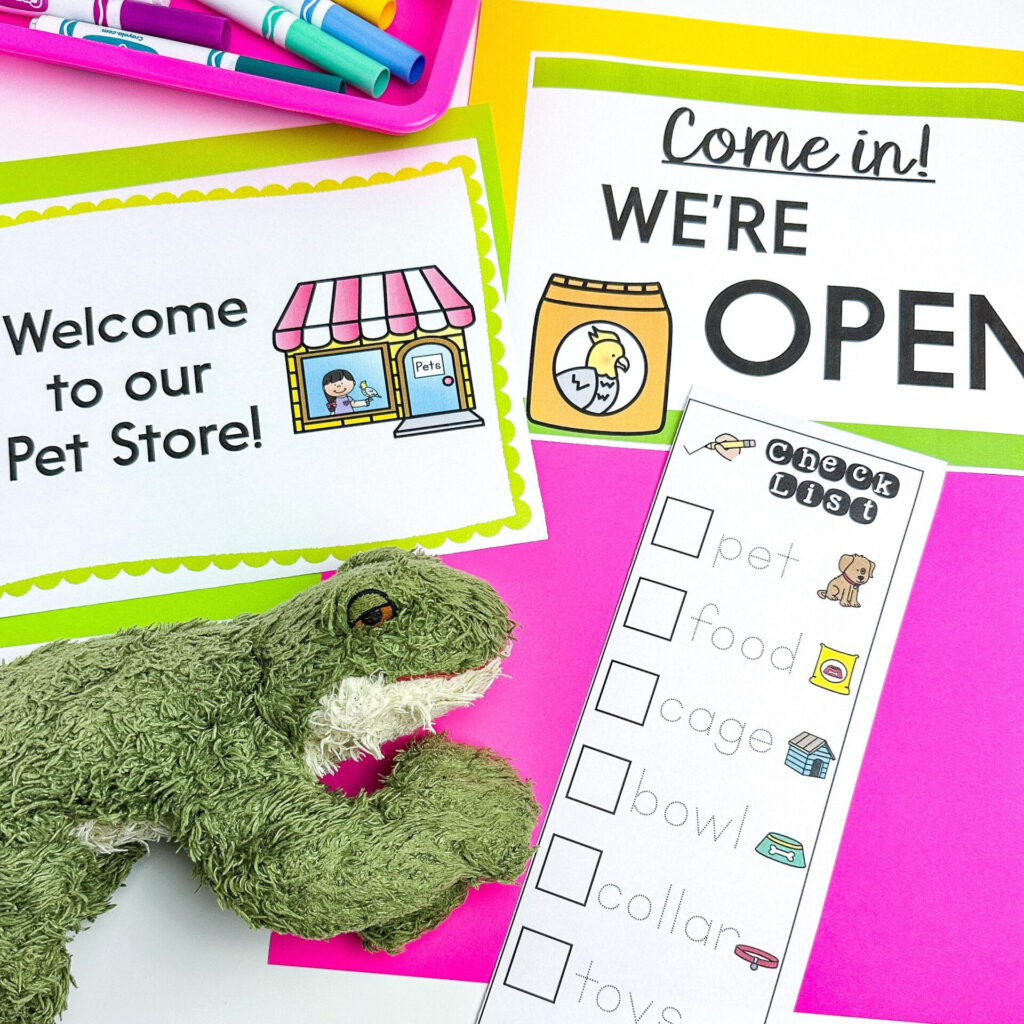
Conclusion
Nurturing higher-level thinking in K-2 students lays the foundation for a lifelong love of learning! As these students grow and mature, their ability to analyze, synthesize, and innovate will continue to serve them well in all aspects of life. I hope the information in this post about higher-level thinking was helpful! Let me know in the comments if you have ways that you like to encourage your students to think critically.
Happy teaching!

